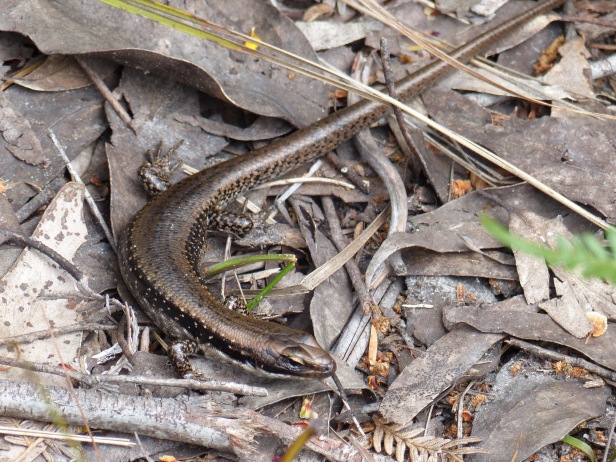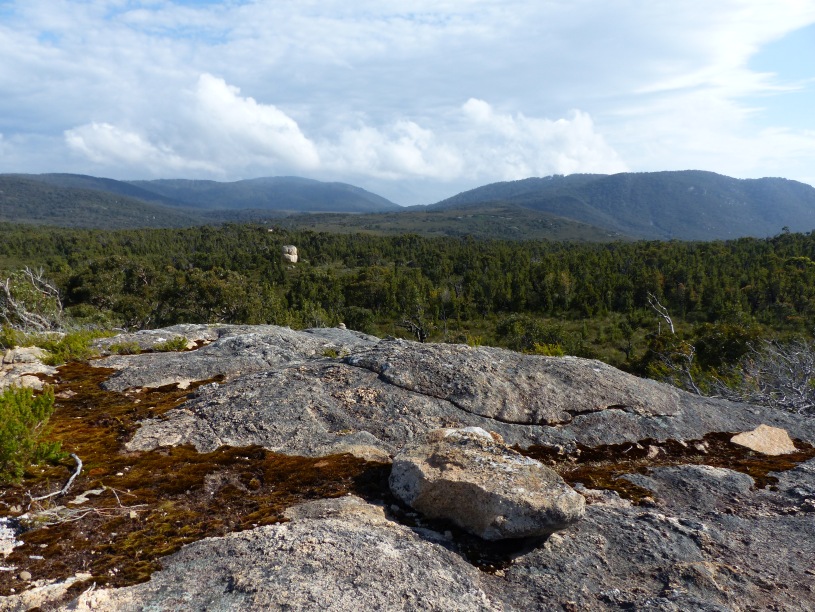Almost every Victorian has a soft spot for Wilson’s Promontory National Park, one of the state’s most iconic and visited parks. So to be asked recently to go on a hike in the less visited northern section of the ‘Prom’ I jumped at the chance, especially since we were there to look for the rarely seen Ground Parrot.
We started the hike at Five Mile Rd carpark just off the main road once you get inside the Prom. Here we walked east over undulating hills to Barry Creek campsite where we set up our base camp for the surveys. In the afternoon we hiked north along the Lower Barry Creek track for over 2km checking areas of low shrubs and heathland, the Ground Parrot’s favourite habitat, then returned back to camp. Most of the suitable habitat we found was not far from our camp so this was where we concentrated our efforts.



Unfortunately we didn’t see or hear any Ground Parrots during the two days. We did however stop to talk to a lone hiker who we asked if he had seen any low-flying, stocky green parrots. When we described them to him he seemed certain that’s what he saw but some descriptions he gave us sounded dubious. Who knows?
The Ground Parrot is a very cryptic species, much like its closest cousin the once thought to be extinct Night Parrot. A plump bird, the Ground Parrot is green with heavy mottling of yellow and black and a distinct red patch above the bill. It is more often heard than seen, unless accidentally flushed out of heath and is listed in Victoria as threatened. The call (which I had on an app on my phone) is very unlike any parrot I’ve ever heard and for me sounds more like a Gerygone than a parrot. Information beforehand suggested the Ground Parrot calls at dusk and dawn so these were when we did the most of the surveys. What we didn’t realise until after the survey was they actually call more often half an hour before dawn and half an hour after dusk!
We did however see a lot of interesting plant and animal life as well as some stunning landscapes so it was still very much worthwhile going on the hike. Chestnut-rumped Heathwrens were very common in the low heath areas. I’d only seen a fleeting glimpse of them before so to see and hear them a lot was great. I got some terrible photos of some at a distance so I wont embarrass myself and put it on here!






There are plans for another survey next year and this time with the new information that has come to light hopefully some can be found/heard and counted.
Anyone who sees or hears a Ground Parrot around the Northern Wilderness Area of Wilsons Promontory National Park, Nooramunga Marine & Coastal Park and Cape Liptrap Coastal Park can download the survey and ID form from the Parks Victoria website.
Thanks go to Denise and Anthony Fernando, the Victorian National Parks Association and Denis Nagle for a great hike in a great location.


Incredible wildlife shots! You were far too close to that snake for my liking…! Look forward to seeing more.
LikeLike
Thanks for the compliment. The snake wasn’t as close as you might think (thanks to a zoom lens) but it’s still unnerving when you almost step on one! By the way I love your blog.
LikeLiked by 1 person
Thank you!
LikeLike
Great story and beautiful shots. We’ve done the rest of the park and were hoping to do the north east next time. We are put off by rangers comments of it being a long boring track to Five Mile Beach. Apart from the great flora and fauna, what are your thoughts?
LikeLike
I can’t imagine the rangers saying its a boring track, thats far from the truth! We were there in Spring so there were wildflowers everywhere and wildlife to match. We didnt get to five mile beach but camped a Lower Barry campsite and did day hikes from there almost to Chinamans Creek. Definitely recommend the track scenery wise too. Theres a large rock outcrop which give 360° views on the track between Lower Barry camp and Chinamans Creek. Apparantly Chinamans Creek can get very deep and you need to wade through chest high water when its full. Should be lower this time of year though.
Have fun if you decide to hike this section of the Prom. I know I definitely want to go back soon.
Craig
LikeLike
Check out the photo of the tiger snake – take a closer look – there are 2 snakes – one to the left in the grass (viewers left) just at the “bend” of the dominant snake!
LikeLike
It’s actually a Banksia cone next to it, not a snake. Looks a bit like a snake though.
LikeLike